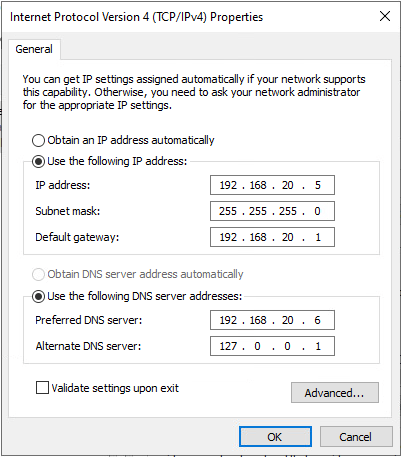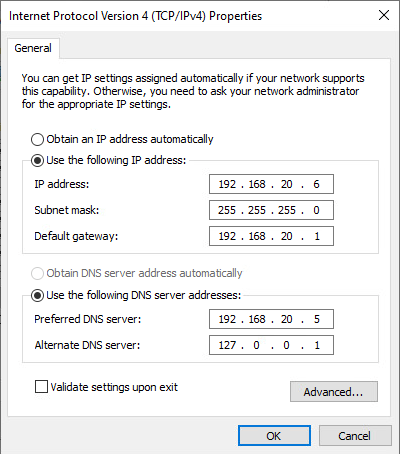In a typical production environment, it’s recommended to have at least two domain controllers: one primary and one secondary. This setup ensures redundancy, so if one domain controller fails, the other can step in and take over.
Primary Domain Controller (dc1)
| Hostname | IP | Default Gateway |
| dc1.ictlab.local | 192.168.20.5/24 | 192.168.20.1 |
Secondary Domain Controller (dc2)
| Hostname | IP | Default Gateway |
| dc2.ictlab.local | 192.168.20.6/24 | 192.168.20.1 |
DNS Configuration on dc1
On dc1 the configuration will be as follows:

DNS Configuration on dc2
On dc2 the configuration will be as follows:

This approach aligns with Microsoft’s recommendations, and I haven’t encountered any issues with it in my current work environment. However, it’s important to note that opinions on this topic vary widely online. A quick search on Google will reveal a range of different implementations and viewpoints.